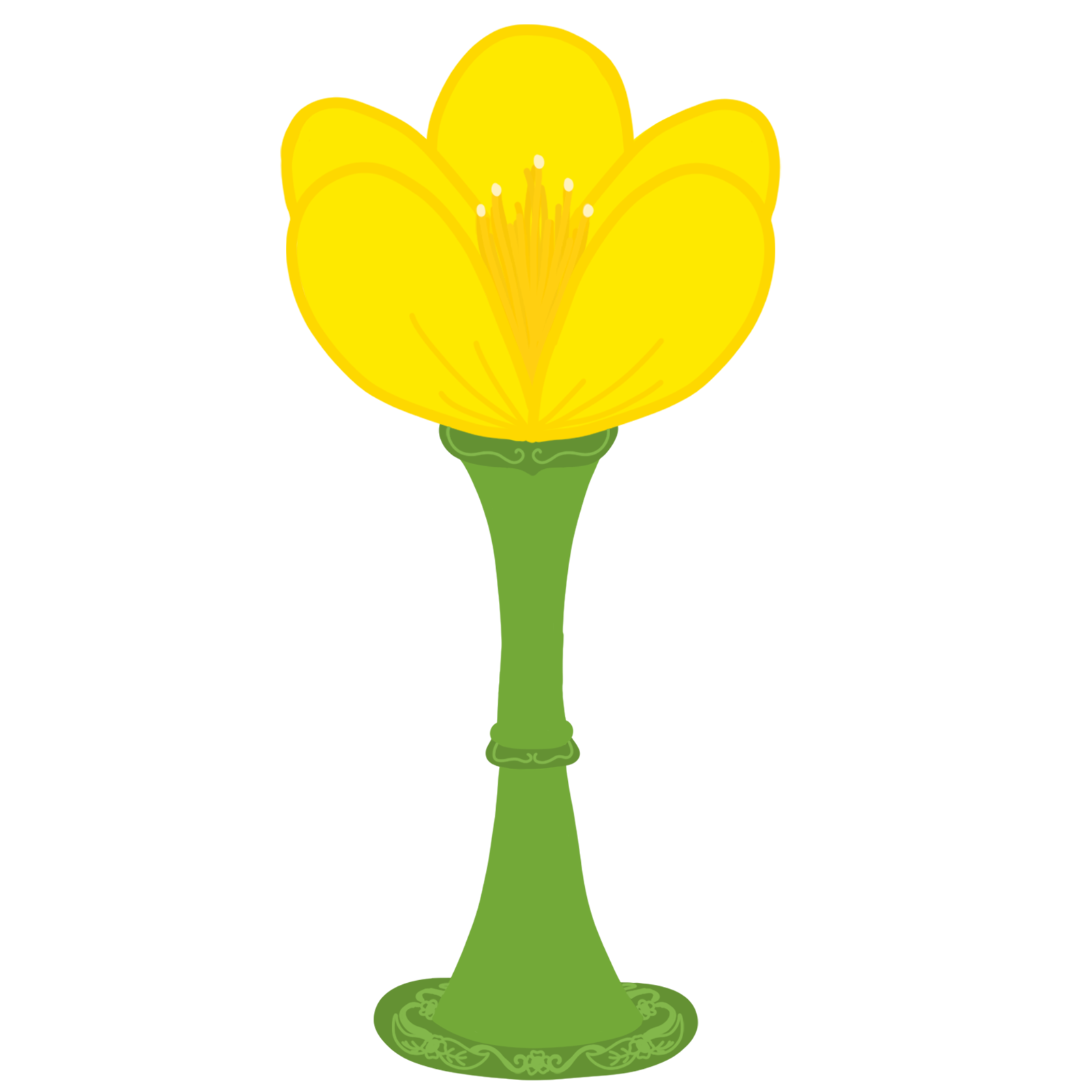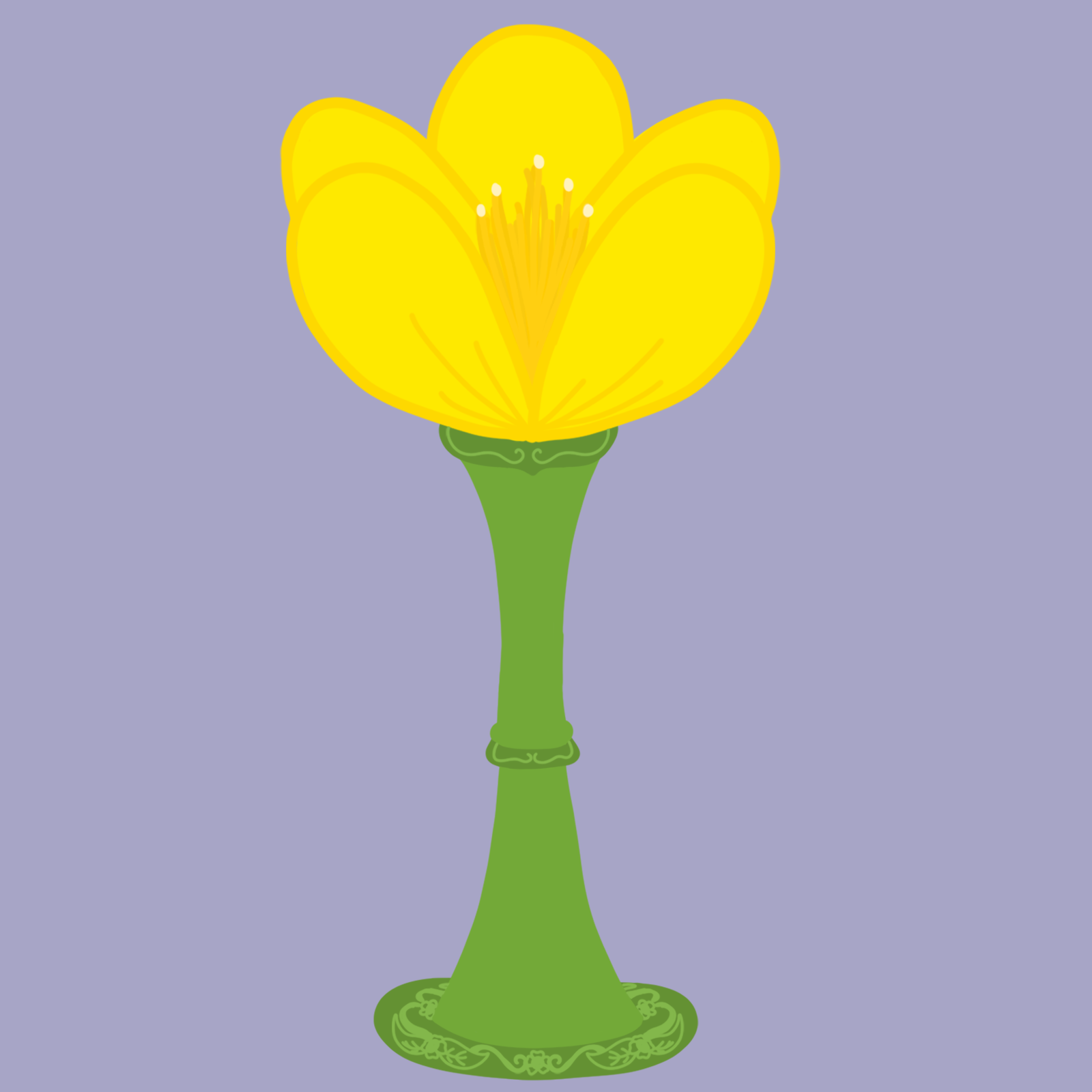
Though this flower is flower is more commonly known as the marsh marigold, I went with the name kingcup as this name had a better link to our fantasy theme. The kingcup is quite obviously part of the buttercup family, and resides generally within marshes, fens, and wet woodlands. Generally, the flower has 5-6 petals, in the centre of which sits the stamen and stigma. An interesting fact about the flower is that the proper flower name, 'Caltha Palustris' comes from the Greek 'Caltha' meaning Goblet, which is likely why the flower is now known as a kingcup.

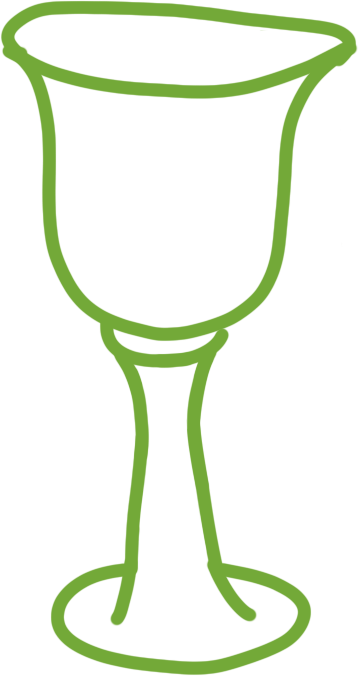

For the design of the kingcup, I decided I wanted the flower to be in the design of a goblet, this was for two reasons. The first reason was due to the name king-cup, the concept was for it to be a king's cup, or a goblet. The second reasoning for this flower design taking elements of a goblet was because of the official name of this flower being 'Caltha Palustris'. The etymology for this dame derives from the name Caltha being Ancient Greek for goblet, which is said refers to the shape of the flower.
Due to the fact that I felt as though changing the shape of the petals into a bowl shape would prove a challenge, I sketched a shape of a goblet, and attempted to copy this shape with the five petals of the kingcup. The general concept as a whole, as shown in my final design, is that the bowl of the goblet would be formed by the petals of the flower, the stem of the flower would make up the stem of the goblet, and the foot of the goblet would be at the bottom.
Whilst making the bloom of the flower, I felt as though it would look nice for the stamen to form a crown, and thus would strengthen the flower's relation to the king concept. I struggled a bit with this design as I didn't think it looked much like a crown.
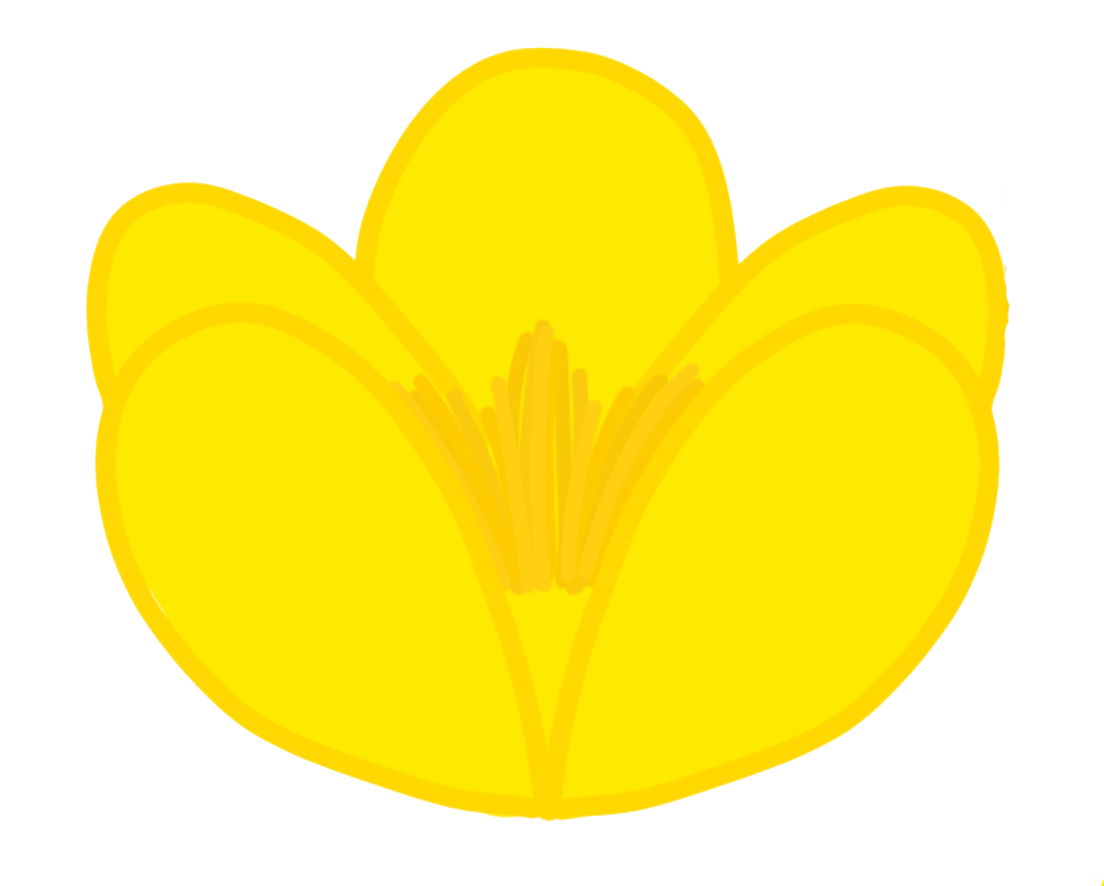
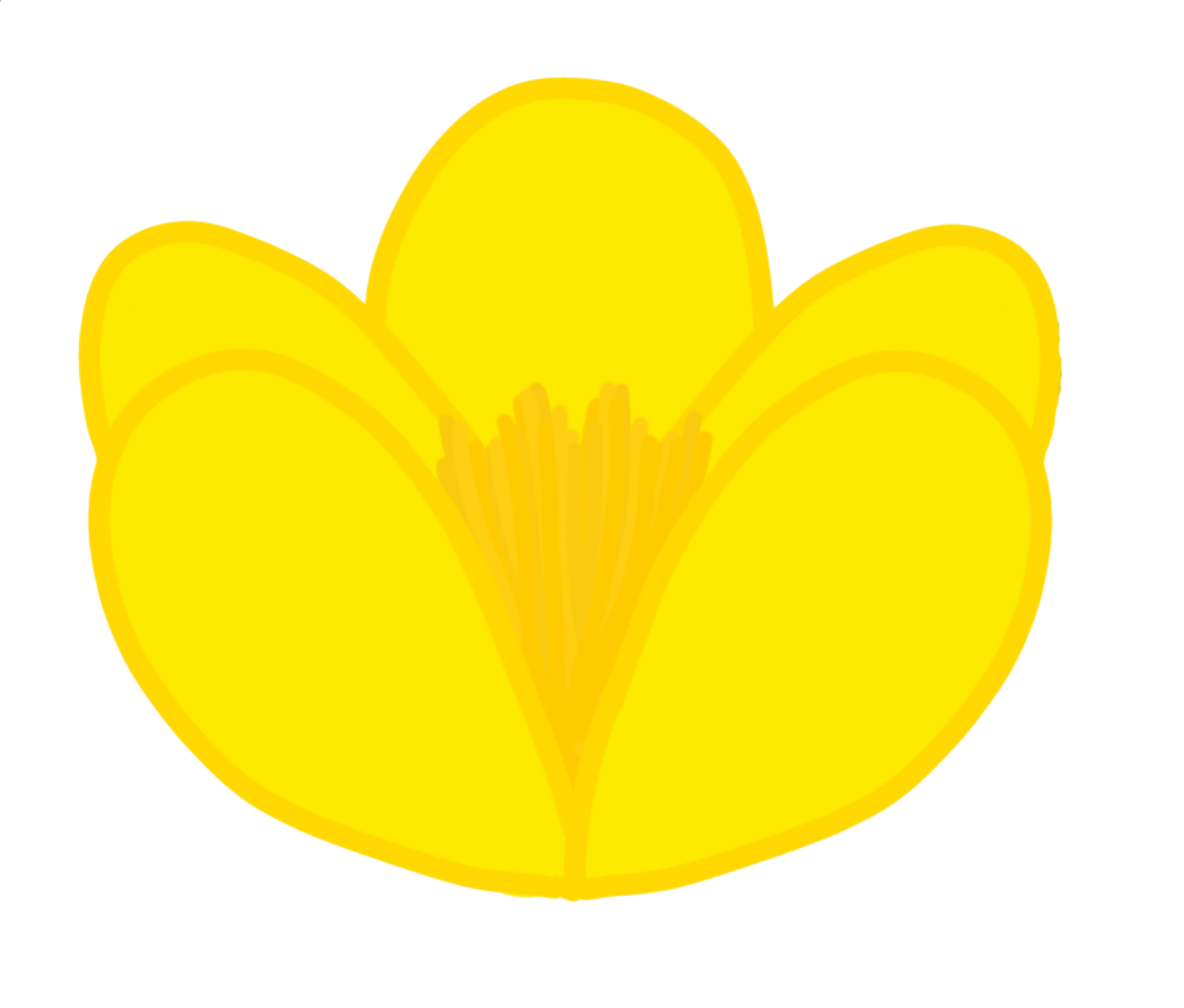
I attempted another design of the stamen crown, but this time with four smaller prongs to the crown. Though I think this worked better, I don't think it was very obvious that it's supposed to be a crown. In this new design, I did also fix it so that the filaments went down to the centre of the petals, and didn't just float in the middle of the flower.
When looking for references of other simple illustrations of flowers, I found that, though it varied, a most of the designs would have five prongs to the crown. Another feature I discovered that proved important to my design, is that almost all of these icons of crowns had orbs-like features on top of each of the prongs, so I knew this would be a key feature for my stamen to be able to look like a crown.
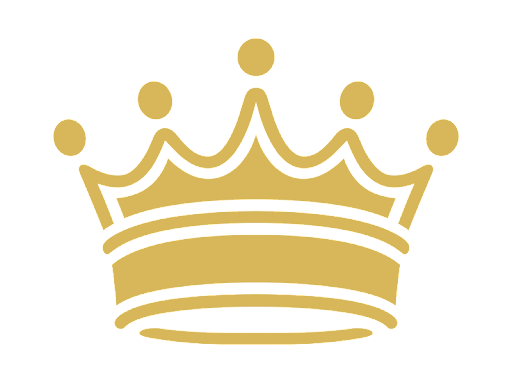
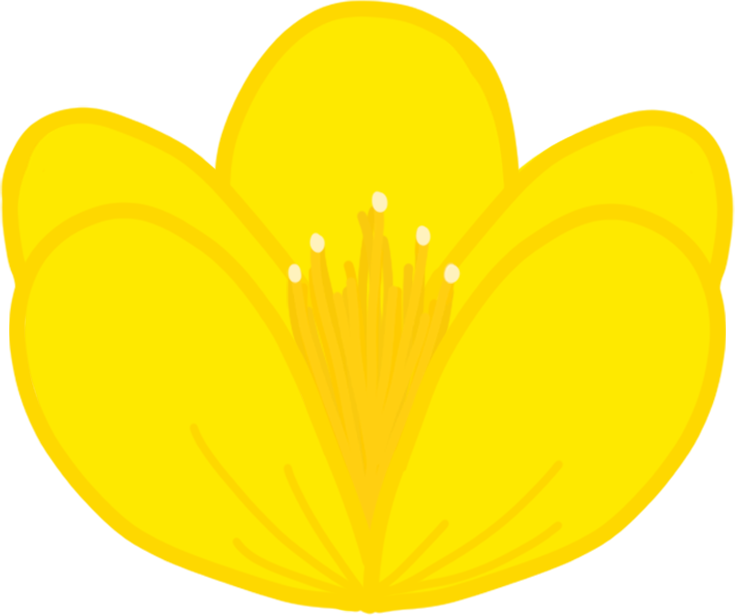
In this new design, I took the commonly used five prongs, and I felt as though it was a lot more visually obvious as a crown. To find a way to incorporate the orbs on the crown into the design, I looked back to the kingcups, and found that the stamen was a lot thicker at the top, likely due to the anthers, so I took this opportunity to put the prong balls into the design. To make these more obvious I made them a lighter colour, and had five of them at the top of the five prongs of the crown.
Along with this new design of the stamen, I also detailed the petals slightly more similar to how they are on the real life petals.
Before I started on the stem of the goblet and the plant, I wanted to look at some goblets to be able to get the proper shape of the stem and foot correct. I found that, in a lot of goblets, about halfway through the stem, they have a small bump, or partition of sorts in them. Usually where the stem joins the bowl, it expands outwards slightly to a cup of sorts to hold it, and most of the finer goblets usually have some sorts of fancy engravings on them.
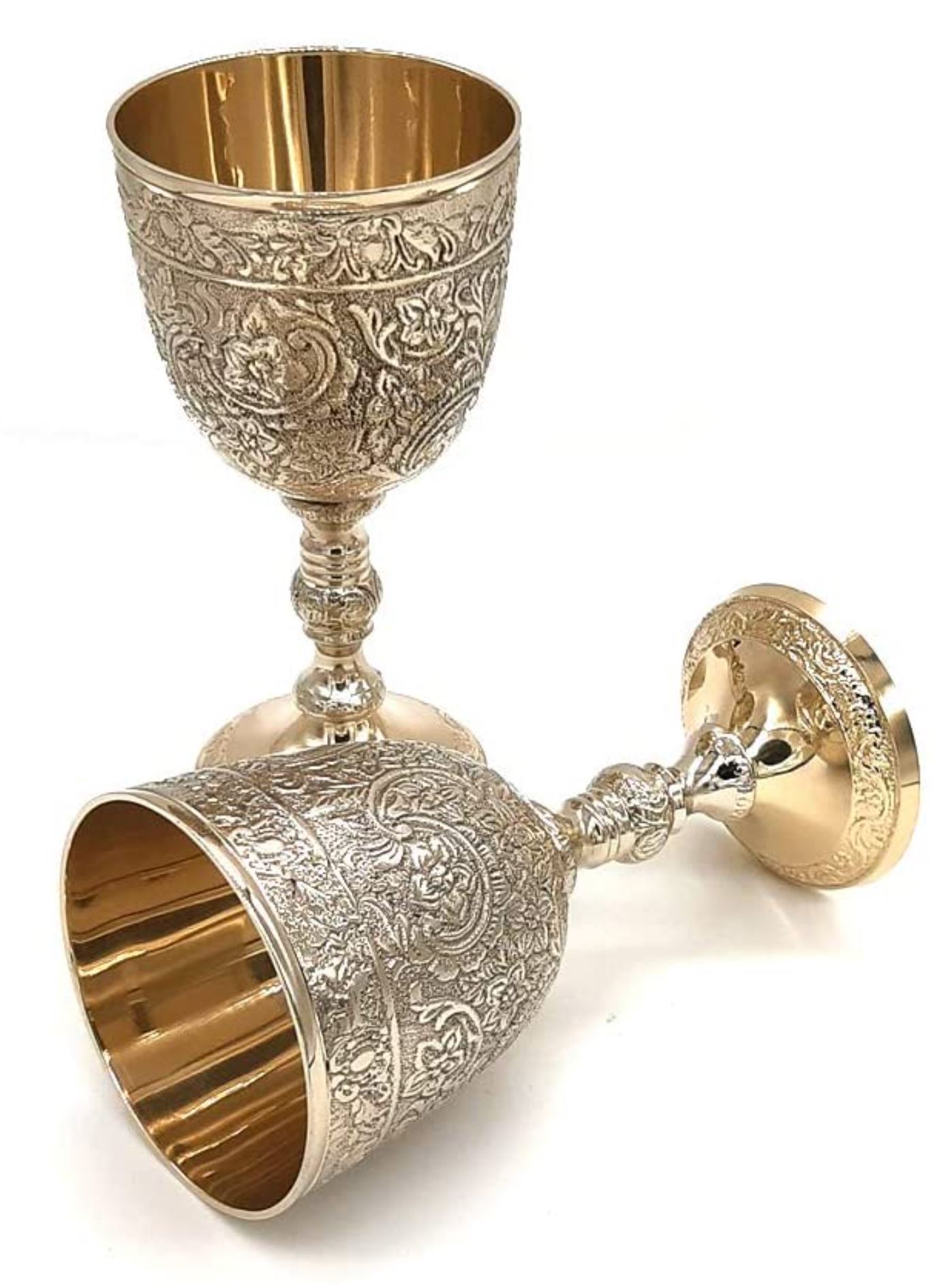
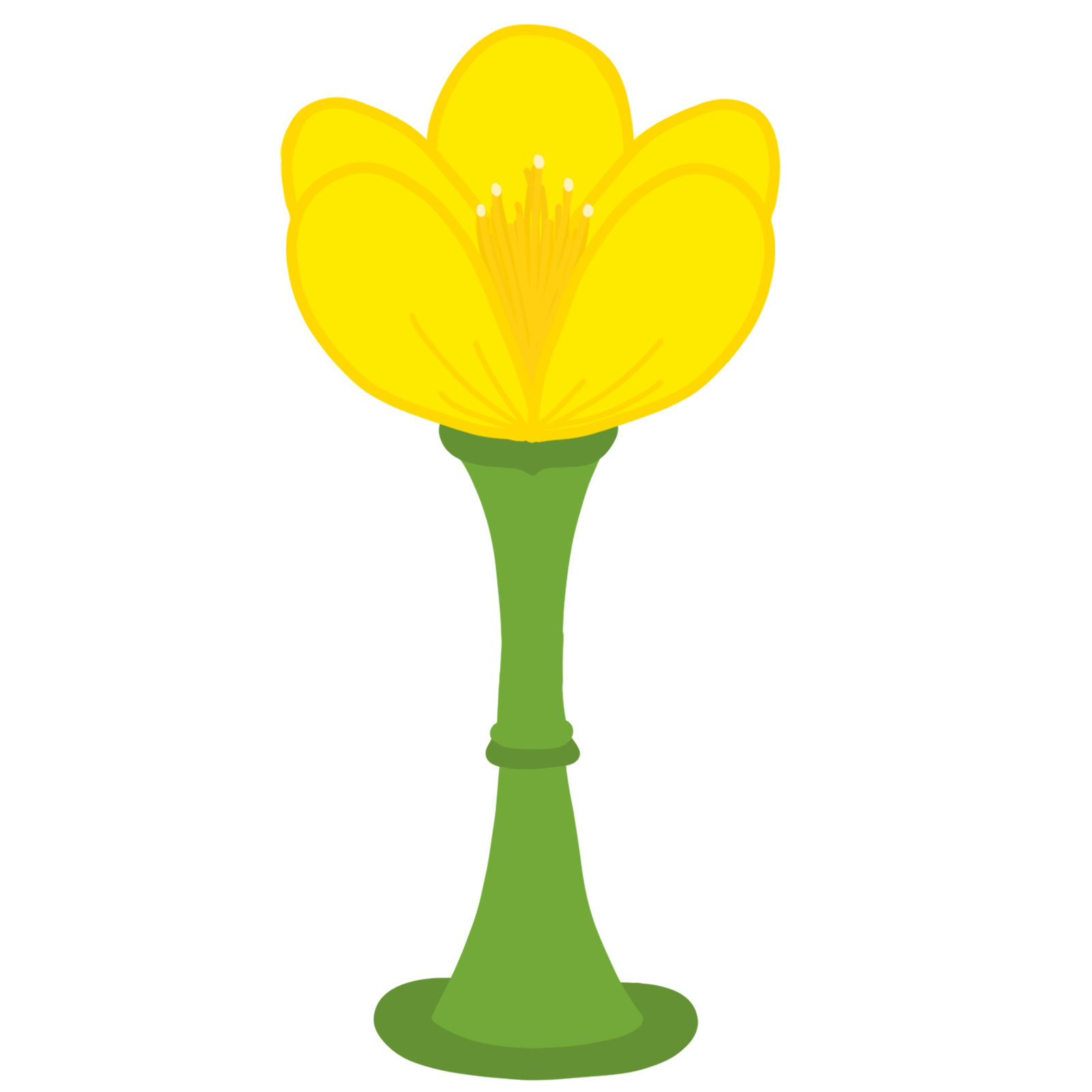
After looking at some examples of goblets, I tried to make a nice shape for a stem, incorporating where some have a small band in the middle. I tried using two tones of green to make sure they stood out, and contrasted well from each other.
Some of the goblet designs I looked at had engravings, especially the fancier ones, and I would consider the goblet of a king to be fancy, so I attempted to put some engravings round the stem and foot of my flower. I felt as though the engravings definitely reinforced the idea of this being a goblet, a concept that I was worried would get lost if not in a food context. I made the engraving designs flower themed so that it would link back to not only the game being about flowers, but also that the goblet is a flower.
